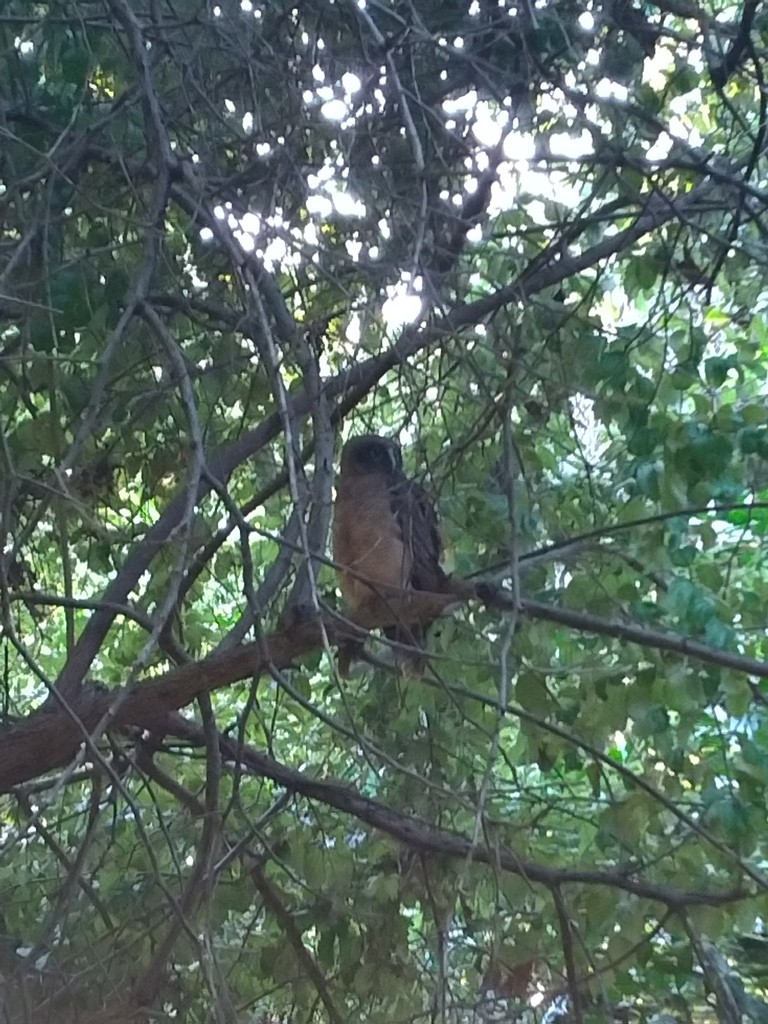Rufous Owl
A species of Asian and Australasian Hawk-owls and Boobooks Scientific name : Ninox rufa Genus : Asian and Australasian Hawk-owls and Boobooks
Rufous Owl, A species of Asian and Australasian Hawk-owls and Boobooks
Botanical name: Ninox rufa
Genus: Asian and Australasian Hawk-owls and Boobooks
Content
Description General Info
 Photo By wallyisfound , used under CC-BY-NC-4.0 /Cropped and compressed from original
Photo By wallyisfound , used under CC-BY-NC-4.0 /Cropped and compressed from original Description
The rufous owl is a large bird, often growing to 46–57 centimetres (18–22 in) in length, with a wingspan of 100 to 120 centimetres (39 to 47 in). Females typically weigh 700–1,050 g (25–37 oz), while the males typically weigh 1,050–1,300 g (37–46 oz). Both sexes have relatively small heads compared to their body and tail, but the head of the male is flatter and broader than that of the female. Juveniles are much smaller, usually 49–54 mm (1.9–2.1 in) long at birth, and are covered in downy white pelage. The forehead, neck, back, and upper wings of the adults are usually a dark reddish-brown with light brown barring scattered throughout. The face is dark brown, and the neck, breast and underparts are rufous with thin cream bars. The underside of the wings are light brown with thick cream bars. The hooked bill is light grey and is surrounded by black bristles at its base. It has golden-yellow eyes. 
Size
52 cm
Nest Placement
Tree
Feeding Habits
Rufous Owl preys on a wide range, from insects to mammals like flying foxes and possums, preferring juveniles of larger species. They diversify their diet with birds, altering prey choices seasonally. Rufous Owl employs various hunting methods such as perch-stalking and aerial pursuit.
Habitat
The rufous Owl typically resides in dense rainforests, well-wooded savanna lands, monsoon woodlands, and areas adjacent to forests, particularly near watercourses. This species is less frequently found in paperbark forests and mangrove ecosystems. It often seeks daytime shelter in dense foliage or tree hollows and may hunt in suburban gardens.
Dite type
Carnivorous
General Info
Feeding Habits
Bird food type
Behavior
Rufous owls are characterised by having rather shy and elusive natures but are known to become aggressive if threatened. They are almost exclusively nocturnal birds and will remain in their nest or roost during the day. They are generally not very vocal, except during the breeding season. During this time, males and females will communicate to one another using calls of various pitches. The voice of the female is of a higher pitch than the male's. 
Distribution Area
Ninox rufa has a wide geographic range. It is native to the Aru Islands, New Guinea and northern Australia, where it is found in Arnhem Land, the northern Kimberleys, the eastern Cape York Peninsula, and the Mackay District of eastern Queensland. It is the only exclusively tropical owl in Australia. The global population size of Ninox rufa has yet to be determined, but the species is considered uncommon to rare. The owl inhabits terrestrial ecosystems. It is mainly found in rainforests and the margins of rainforests. Additional habitats may include other forests, moist savannas, and inland wetlands. 
Species Status
According to the IUCN Red List of Threatened Species, Ninox rufa is not listed as a vulnerable species. It was most recently classified in 2016 as a species of least concern. While its population size does appear to be decreasing, its rate of decline is not considered rapid enough to be considered under the vulnerable category. The species has experienced less than 30% decline over the last ten years or three generations. However, the rufous owl, like many other birds, is subject to the threats of hunting, clearing of forests, and forest fires during the dry seasons. 